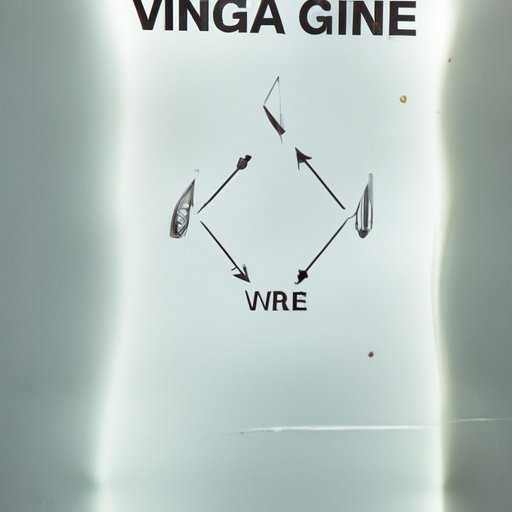
How to Get Rid of Gnats with White Vinegar: A Comprehensive Guide
Gnats are pesky insects that can invade homes and offices, disrupting comfort and productivity. They are commonly found in areas associated with spoiled or overripe food, like garbage disposals and drains. However, gnats can also breed in houseplants, flowers, and moist soil. This article will introduce a simple and effective solution for getting rid of gnats using white vinegar. We’ll discuss why white vinegar is an effective solution, step-by-step instructions for creating a white vinegar gnat trap, alternatives to white vinegar, the science behind its effectiveness, common myths about gnats and their infestations debunked by white vinegar, and finally, tips for preventing future gnat infestations.
Why White Vinegar is an Effective Solution for Gnat Infestations
White vinegar is a non-toxic and eco-friendly solution for getting rid of gnats. It is a highly acidic substance that can destroy the eggs, larvae, and adult gnats. When used in a trap, it lures the insects and captures them with its sticky texture. Compared to other chemical solutions, white vinegar is affordable, easily accessible, and does not pose any health risks to humans. It also leaves no residue and is safe to use around pets.
Step-by-Step Instructions for Creating a White Vinegar Gnat Trap
Materials needed:
- A shallow dish or bowl
- White vinegar
- Dish soap
- Plastic wrap
- A toothpick
Instructions on how to set up the trap:
- Pour enough white vinegar to fill one-third of the dish or bowl
- Add a few drops of dish soap and stir gently until it is evenly distributed. Dish soap will break the surface tension of the vinegar, making it easier to trap the gnats
- Cover the dish tightly with plastic wrap, making sure to create a few holes with a toothpick for the gnats to enter
- Place the trap in an area where gnats are present, like the kitchen or near a houseplant
- Check the trap daily and dispose of the contents once it is full
Tips for maximizing the trap’s effectiveness:
- Make sure the plastic wrap is tightly sealed around the dish to prevent gnats from escaping
- Place several traps around the house if needed
- Replace the solution every four to five days
Alternatives to White Vinegar for Gnat Infestations
The best way to prevent gnat infestations is to maintain cleanliness and remove potential breeding grounds. Here are some additional solutions for getting rid of gnats:
- Clean the kitchen and disposal regularly, making sure to remove any standing water or debris
- Avoid overwatering plants and allow the soil to dry out in between
- Use essential oils like eucalyptus, lavender, or peppermint as natural repellents around areas where gnats are present
- Insecticides or organic solutions like neem oil or bacillus thuringiensis (BT) can also be effective in eliminating gnats
Science Behind White Vinegar’s Effectiveness on Gnats
White vinegar’s acidity is harmful to both the eggs and larvae of gnats. It changes the pH level of their environment, killing them before they can reproduce and grow. The scent of vinegar also repels gnats, making it less likely for them to return to the same area. Lastly, the sticky texture of the solution captures the gnats, trapping them until they eventually drown.
Common Myths About Gnats and Their Infestations Debunked by White Vinegar
Contrary to popular belief, gnats do not only breed in areas with spoiled food. They can also infest areas where moisture and organic matter are found, like houseplants, compost bins, or wastewater. Gnats can travel up to 12 miles in search of food and may also enter buildings through windows and doors. However, using white vinegar traps and maintaining cleanliness can effectively reduce and prevent gnats from infesting the house.
Tips for Preventing Future Gnat Infestations
Prevention is key when it comes to gnat infestations. Here are some tips for preventing future gnats from invading your space:
- Seal cracks and crevices around your home to prevent gnats from entering
- Properly dispose of and store food, avoiding leaving them exposed for too long
- Use unscented soaps and detergents to avoid luring gnats to your space
- Regularly clean and maintain houseplants, removing dead leaves and excess water
Conclusion
In conclusion, gnats infestations can be annoying and disruptive, but there are effective and eco-friendly ways to get rid of them. White vinegar provides a harmless yet powerful solution for trapping and killing gnats, making it an affordable and accessible option for anyone to use. By following the step-by-step instructions and tips provided in this article, anyone can create their own vinegar gnat trap and effectively eliminate gnats from their home or office.




